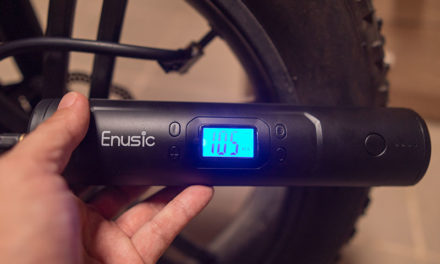
Urban Wagon - ADO A20 Electric Bike Test

The ADO A20, the brother of my off-road bike, has arrived, tuned specifically for urban use.

contents show
Join the official group of Hungarian ADO bike owners by clicking here!
Introductory
Last fall, I finally got to the point where I bought my first electric bike. It was then that I wrote that I didn’t originally buy what I planned, but life has brought us moving to the countryside, and there are so many frantic bike tours here that I bought a bike tuned to the terrain instead of the city.

In today’s article, however, I present a bike that I originally planned to buy, at least in terms of construction. This is nothing more than the urban cajga of the ADO, or longer name A Dece Oasis.
Packaging, accessories
The box came with a logo already known to me, but it was smaller than it was for the ADO Z20 C. Not only is it smaller, it’s also lighter, which even before unfolding shows that a completely different two-wheeler is lurking in it.

When the lid is opened, everything is packed with the usual sophistication, taking care not to spill the paint or damage anything during transport.

In addition to the folded bike, we find two smaller boxes, the two pedals in one bag, and some tools in the other. One of the boxes contains the EU plug charger and the other has a gift phone holder. The latter is no accident, it is precisely due to one of the differences between my own Z20C and the A20.

Assembly
Assembling a bike is not a big deal. No technical qualification is required.
As a first step, take off the quick-release bandages. If this is the case, unfold the bike and install the side support to stop on your feet during the next steps.

You can come off the protective cover, the soft layers are held in place by adhesive tape. Once the guard has been removed, the handlebar can be fitted in place by tightening an Allen screw under the folded-down rod. Put the seat in place, screw up the pedals and you're done.

After installation, before the first start, one thing must be checked, the operation of the brakes. I wrote in last year’s article that in my great enthusiasm I forgot about it and it almost failed because the brakes didn’t catch on.
In the case of the A20, at least in my case, the check was enough, both brakes worked properly.
Paper form
It's time for a warning!
In the following, you will be instructed to be able to override the maximum engine power or maximum top speed limitation. However, according to current laws, electric bicycles marketed in Hungary (and the EU) can have a maximum power of 250 watts and a maximum top speed of 25 kilometers per hour.
So, if you change these values, you can only use the bike in private areas, not on public roads, in traffic, not in public areas!
The law also states that an electric bicycle is one in which the engine's drive is switched off if the pedal is not turned or if the speed is close to 25 Km / h.
That is, in summary: If the bicycle in the article uses the second or third gear (ie the throttle) and / or the maximum speed is increased from 25 km / h and / or the 250 watt power is increased, no longer with an electric bicycle, but we also ride a moped, which also requires a license, a helmet and compulsory liability insurance.
Basically, the ADO A20, at least on the drive side, is the same as the Z20C. That is, the engine is a 350-watt, naturally carbon-brushless, powerful piece with a rated speed of 380 rpm. The battery is 36 volts, 10,4 Ah.
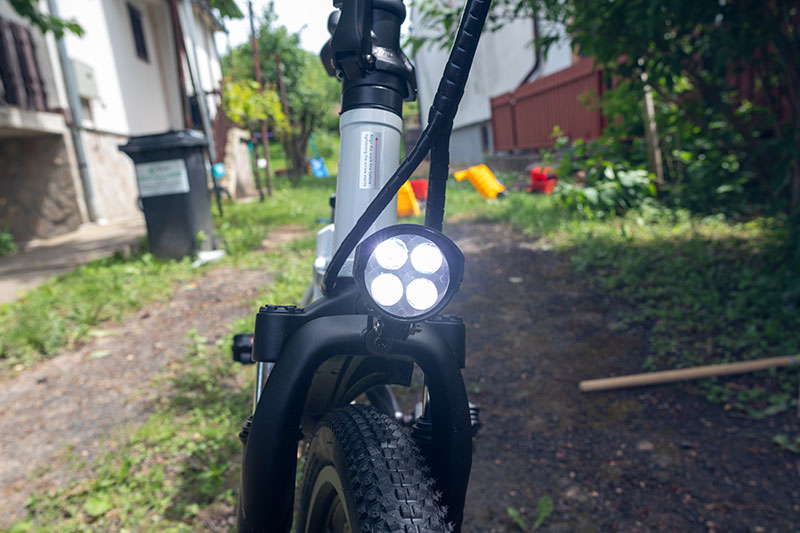
In connection with the motor, it is important that its power is limited to 250 watts according to the factory information. This limit can be removed by setting the factory programmed maximum speed higher. You can find a way to do this a little further down.

With regard to the battery, it is also worth noting that the factory description includes a statement that the battery cells are of automotive grade. If this is the case, then this is really great news, because the durability, ie the number of charging and discharging cycles can be significantly more this way, and even with a lot of charging and immersion, the package will lose its capacity more slowly.

To charge the battery pack, we get a 42 watt charger with which we can charge from zero to 6 in 100 hours. It should be emphasized here that the battery pack can be easily removed from the frame, so you can charge it at our desk, even if you go to work in the apartment or on the bike, and then you have finished tipping the charged battery back into place and head home.

The range is, according to factory data, purely electrically 45- assisted with 80 kilometers on a single charge. The factory-set maximum speed is 25 kilometers per hour, but this limit can be bypassed (by setting Computer P08). Of course, it won't go a hundred either, but it's 30-35 miles away. Of course, it depends on the topography and also on our weight. The latter figure, ie the maximum load capacity, has been given at 120 kg, which is a fairly favorable value, with the upper limit being 100 for most similar categories of electric vehicles.

The frame of the bike is made of aluminum, the total gross weight is 28 kilograms. I didn’t measure it, but it might be right, or if it isn’t, I’m too strong. The rims are also made of aluminum, which are 20 inches, the tires on them can of course be inflated, not solid. Among the specifications, the control system called ADO G-Giver is highlighted, which is responsible for controlling the drive for energy recovery. Because of the name, I think my own development.
Let the visible things come!
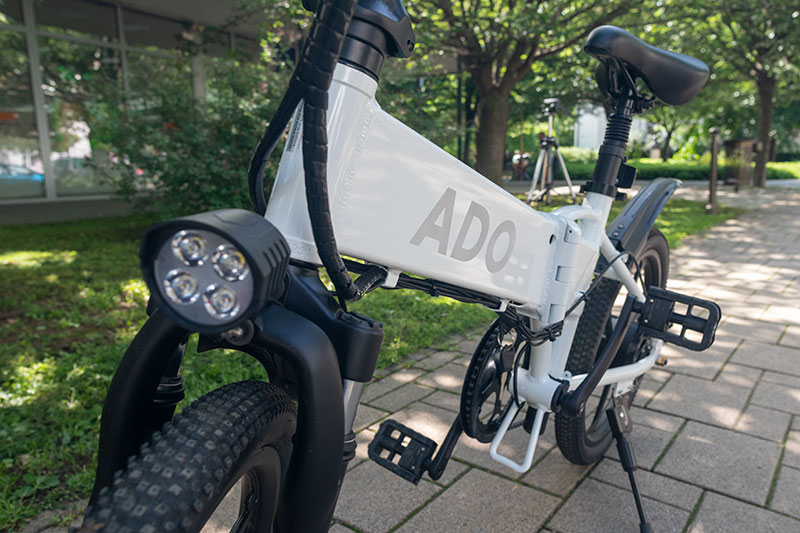
The bike received shock absorption at both the front and rear. In the usual way, the fork is in the fork in the fork, and at the back, under our bottom, in the seat tube. I have a Shimano derailleur, seven-speed, the entry level is true, but it’s also on my own bike, and there’s no problem with it, even though I don’t skim it in an urban setting.

There is also a good brake, we need to be able to stop at a speed of 30-35 kilometers. We get disc brakes from the front to the rear, though not a hydraulic “only” bowden cable, but it serves the purpose.

Let's see the steering wheel and what's on it!
On the left is a lamp switch and a bagpipe. It’s pretty loud, but it has a weird voice, if I yell at someone, one thing is for sure, it doesn’t even occur to me that I was humming. My guys love his voice, they have to whistle sometimes when we go biking.

Next is the S866 on-board computer. It is used by quite a few manufacturers, so we can find detailed descriptions in many places on the net.

It doesn't hurt, because in addition to knowing the usual things (distance traveled, time since departure, speed, average speed, total distance traveled by bike, brake feedback), there are also a lot of submenus that you can press by pressing the + and - buttons. can be achieved by keeping it. Here, for example, we can set the factory-locked top speed higher.

Next up is a USB port, which is unfortunately a new thing. I mean, unfortunately, because my bike hasn’t gotten out of it yet, whoever buys the A20 can be happy, of course, because it already gets it from scratch.
I installed the gift phone holder in the free area after the government. I mentioned above that I’m talking about the reason we get it, well, well of course the novelty, i.e. the USB port with which we can charge our phone.
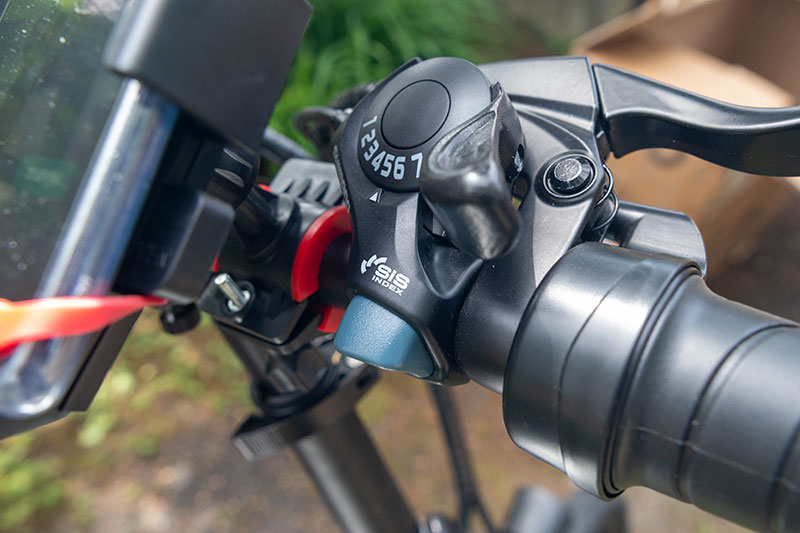
Then comes the shift lever. Press the gray button to switch up, pull the lever down. The throttle lever is at the base of the right handle. That is, in this case it is not an arm, we can turn the inner part of the handle, a few centimeters, in which case the electric motor drives the bike. The two ends of the steering wheel are, of course, the two brake levers.
Experiences
I think we managed to go through the essentials, now may come the part of whether the ADO A20 is good or not!
Let’s start there, that although the A20 and the Z20C images I use are very similar, there are a lot of differences in life between the two bikes, and not just in terms of looks.

While the Z20C is an affordable off-road bike, the A20 is specifically sharpened for urban, asphalt use. This is also evident on the chassis, where the rear fork is much more filigree than the Z20C. But not only is this the difference, but also that the spring path of the first telescope is much shorter, the telescope is much tighter. This is also understandable, as softer suspension is completely unnecessary for asphalt.
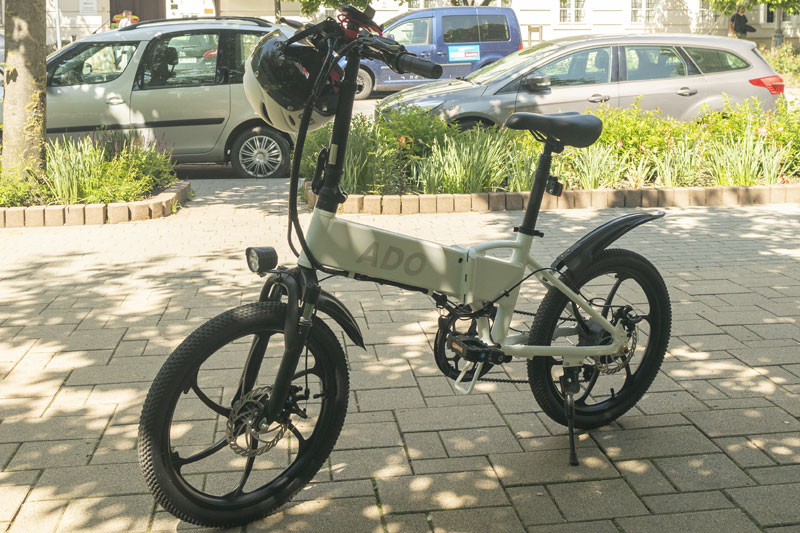
Another change is that the A20 has also received shock absorption under the seat, which is especially good if the asphalt is of poor quality, makes the seat comfortable and we don’t bounce on the bike like that.
The external size is also smaller than the Z20C, which on the one hand is due to the weight of the machine (easier to carry) and on the other hand is a great advantage when carried in a car. While the Z20C just fit in the trunk of the combine, I was able to put the A20 comfortably, even when laid down.
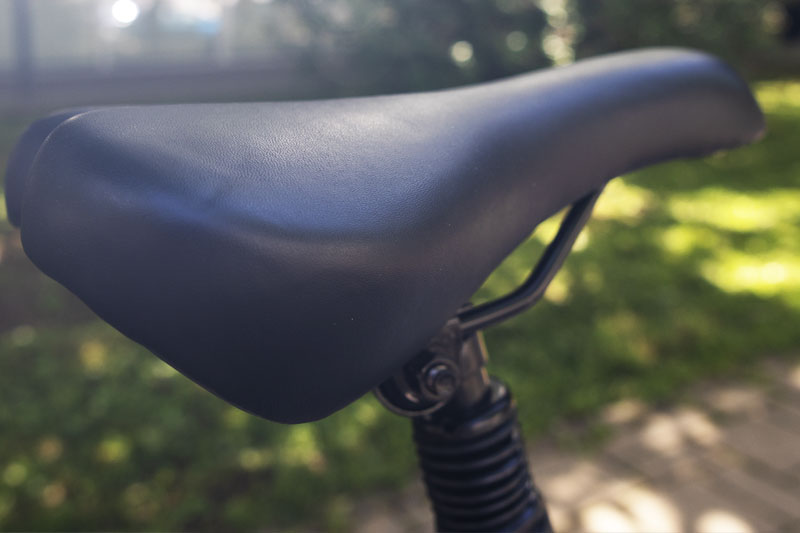
This is a great advantage because, for example, when commuting from the agglomeration, we can come to the city limits or the P + R car park by car, from there we can go further by bicycle, triggering public transport. This is not a definite disadvantage in this age laden with the virus.
What has changed a lot is the operation of the electric drive and the auxiliary. At first I thought the bike I got was bad, I also contacted the manufacturer who sent me the basic settings for the computer, but I found everything to be fine.
The default is if you set something and can't remember what the original value was:
P01: 3, P02: 0, P03: 36, P04: 10, P05: 0, P06: 20, P07: 1, P08: 25, P09: 1, P10: 2, P11: 2, P12: 3, P14: 15, P15: 29, P16: 0, P17: 0, P18: 100, P19: 0, P20: 0
A description of the S866 on-board computer can be found here: https://manuals.plus/lcd/s866-lcd-instruments-v1-0-operating-manual
Just adjust it wisely, the system voltage, number of magnets, wheel size is not good, or downright unlucky to adjust.

During use, I realized that what I was experiencing was not a bug, but quite simply how it works well in urban use. But let's see what it's all about!
- The Z20C has 5 assist levels set (this can be up to 10 if the computer is switched), while the A20 has only three.
- Pedal assist and throttle are also available at the Z20C from start-up at zero km / h, with a lower limit of 20 Km / h at the A6.
- For the Z20C, the pedal assist and throttle can be used simultaneously, for the A20, the pedal assist operates in the first gear, and the throttle lever in the second and third gears.
As you can see in the tuning, the difference is serious, which of course has a good reason.

In the field of the Z20C, it is often good to get help when you start, but it is quite confusing on asphalt - let's just get used to it - because the bike can swing under us properly, and it is enough to move the pedal a bit.
In the case of the ADO A20, the assistance comes from only 6 Km / h, which is a comfortable walking pace only, but so the torque does not come unexpectedly, but as we accelerate, the help comes by turning the pedal.

The same applies to the throttle, ie it does not work up to 6 Km / hour, but above it. (I note here that the throttle setting can be reprogrammed by setting the computer to P09 to work from 0 Km / h, ie immediately upon start-up, but as I wrote above, it is not legal to use a bike with a throttle.)
In the case of the Z20C, it just comes in handy sometimes to get the help by turning the pedal, but if we get to such a terrain, we can help it with the throttle.

Well, it's not necessary in the city either, so it's more economical to operate. If you are cycling on a flat area, you will receive assistance in addition to pedaling on each stage. Not very strong, just that the turning will not be strenuous even at the highest gear, while driving at a speed of 20-25 Km / h.
If we want to work our muscles a little, we can turn faster, so with the help of 25-30 Km / hour can be achieved (Of course, only if we have eliminated the maximum speed, which is still not legal. I also turned it off just for the sake of the test , not tried on the road).

So this is a really cost-effective solution and we don’t have to interrupt. If, on the other hand, a more unpleasant ascent comes, we can switch to double or triple auxiliary gear, where the throttle will operate. So we can turn the pedal and, as we feel it, pull the throttle next to it, so we get a lot of help.
In practice, this means that a speed of 35 km / h can be achieved on a moderately rough incline with the highest gear, which is quite a human value for such a small 20-inch wheel size.

On the other hand, throttle boost has the disadvantage of consuming the available energy better. So, no one should expect that the distance data provided by the factory is available on a continuous hill as well, because it is not.
The good news is that there is energy recovery, which means that if our journey leads up and down, we will get some of the energy lost uphill on the other side of the hill.
Okay, but after a lot of information, what’s it like to ride the ADO A20 electric bike?
Of course, the thing is flawless. We can argue that the maximum power, i.e. 350 watts, is enough or not, but as I indicated above, by law it can be a maximum of 250 watts, and it is no coincidence that the legislature set this limit. Even when set to 250 watts, the bike moves the bike completely flawlessly, I say this by rubbing its glaze from below.

So I think the performance is okay, but the same is true for my own ADO Z20C bike, even though I mostly use it not over smooth asphalt, but over hills and valleys, in woods, in mud, which is what I just face in nature.
The ADO A20 is different, of course. With the same rim size, it has normal-sized but explosion-proof tires that make it easier to roll without assistance than my own.
The shock absorber is really right in front, and I have already mentioned under the seat, a real gift for our seat on a shaky road.
The transmission, the brakes work well. In the ADO Z20C test, more precisely during the video of it, I got that it is not worth the whole throwing tree either, because it has an entry-level Shimano transmission on it. For now, I use it without error, I got cold-heat, mud, water, snow, being salt, but it's a dog problem, so I think there will be nothing wrong with urban use on the A20 either.

I also received a disapproving comment that the brake is not hydraulic. Really not, so it can’t be dosed as gently as a hydraulic one. But I beg, it’s an urban electric bike, not a race bike with which we have to overcome downhill tracks. If you don't have a Bowden disc brake here, take it upon yourself!
If I have to look for the wrong thing, maybe one thing that comes to mind is that we only get one cat’s eye instead of a taillight. Fortunately, a battery-powered tail light lasts for approx. 2000 forints, so this is an easily remediable, but even more incomprehensible shortcoming.

A very good point, however, is the presence of a USB port, and the gift phone holder is not the last. All you have to do is buy a short USB cable and you can navigate your phone on the go, play music, and charge your phone from the bike's battery.
So overall, the ADO A20 has become a great bike, at least as much as my own Z20C, just of course for the terrain, it’s for the city.
Which has not fit into the article so far
There are a few more things I consider important to mention, the first of these is the helmet.
I’ll be completely honest, I never used a helmet for biking until the beginning of this year. Let’s face it, it’s pretty much irresponsible. After my fall Z20C article, someone told me about this, so then when I saw that an ADO helmet could be added to the ADO bike, I also plucked the price.

He came, comfortable, good for my big bowling head too. Foam on the cake, that has a three-point, magnetically attached awning as well, so if you don’t want / love to wear sunglasses while cycling, the beetles won’t fly in your eyes either and the sun won’t dazzle.
I’ll add a link to the helmet at the end of the article to see if you like it.

The other thing to mention is the warranty!
Many people on Chinese bikes are reluctant to buy, saying it is essentially impossible to send a bike back to China, so there is a door guarantee on it. You take it out and there is no guarantee.
I note, of course, this isn’t really the case, there are millions and there’s a solution for repair, but that doesn’t belong here right now, because with ADO, things work completely differently than with an average Chinese bike.
Let's see what the difference is!
- Lifelong technical support
- 10 year warranty on frame and 1 year warranty on structural parts - front fork, seatpost, steering wheel, brake lever, sprocket, transmission, electrical components - charger, battery, engine, controller, instrument, USB charger, accelerator handle, 2in1 switch, headlight, etc.
- After EU sales, EU service points (UK, DE, PL) can be replaced free of charge if repair is not possible
- 8-hour quick-response online service in English and German (as I read in other languages, I don't know in Hungarian)
- In case of failure, free spare parts and repair video will be sent for installation;
- Customers can also purchase spare parts from a third party, in which case ADO will share the cost.
- If the bicycle cannot be repaired in the buyer's country, it can be returned to EU centers
- If they cannot be repaired at the ADO center either, the manufacturer will provide a new bike free of charge.
I hope I didn’t miss anything, the list is long enough. The point is, in this case, that in this case we can not only order our bike from an EU warehouse, but also the subsequent full warranty administration takes place in Europe.
If a part fails, the manufacturer will send the new part through the EU centers, adding the video needed for replacement. That’s a pretty good thing, and I suspect if the repair requires service, cost sharing could come into play here as well.
It also sounds very good about lifetime support, the possibility of quick online error reporting, and the fact that, as a last resort, it should be sent back to an EU headquarters and not to China.
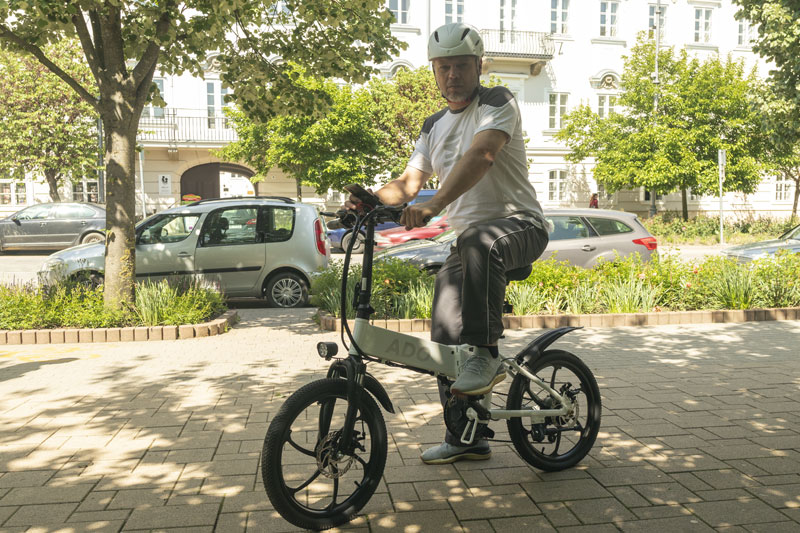
And then the end of the price, because that's why it's important!
The price of the ADO A20 would be 224 thousand forints, but I would have received a coupon code with which we can bring it for 217 thousand forints. Of course, I looked at the commodity finder to see what you could get at home for that price, and that’s exactly what I was expecting. If you are curious about it, check it out too.
The direct competitor in this category is the Himo Z20, which has a domestic price of HUF 290, but you can rest assured that bikes with similar engine power, similar battery and range will cost more than less than Himo.

So, for that money, it’s a really good buy. Who wants a slightly more serious device than a scooter to get involved in an electric micro-mobility system. Or, to put it in Hungarian, you want to take control of getting from A to B, leaving out public transport and driving, and its ADO with the A20 offers a fairly cost-effective solution for this.
If you liked the bike, you can follow the link below, at BGHU0519 or the BGADOA20 you can buy with a coupon code:
ADO A20 Electric bicycle - Czech warehouse
If you also want the helmet, you can find it in a Chinese warehouse here:
ADO cycling helmet with magnetic awning
And if you want a factory boot, it will be here:
ADO A20 factory boot











